- Kite Festival in Jaipur
- New Year Celebration in India
- Family Vacation to India
- Flights from US to India
- Adventure Tour to India
- Tourist Attractions in India
- Behind the Scenes of a Hand-painted Map
- National Parks & Tiger Reserves in Rajasthan
- Embracing Eco Tourism in Rajasthan
- Golden Triangle Tour in India
- Best Time to Visit India
- Tiger Conservation in India
- Sariska and Ranthambore
- National Tiger Day in India
- The Glowing Eyes
- In the Wild Heart of Sariska: A Journey into the Unknown
- Hide and Seek with Hyena
- Rajmata of Sariska
- Sariska Tourism
- Shankar: The Ghost of the Boulders and a Testament to Resilience
- Tigers in Sariska
- Animals in Sariska National Park, Rajasthan
- Weekend Getaway from Gurgaon
- Trip to Sariska National Park
- An unforgettable wilderness walk among Sariska's leopards
- Weekend Getaways From Jaipur
- A Dawn with Leopards
- The Leopards of Sariska
- Wildlife Photography in Sariska
- The Role of Tehla in Sariska’s Conservation Legacy
- Places to Visit Sariska
- Sariska Tiger Reserve and National Park
- Sariska Safari
- Weekend Getaway From Delhi
- Vultures of Sariska
- Deciduous Jungle of Sariska
- Mythological Importance of Sariska
- Sariska Tiger Reserve
- Avifauna of Sariska, Around the Camp, and Nearby Wetlands
- Migratory Birds of Sariska
- Boulders of Tehla
- Camera Trap
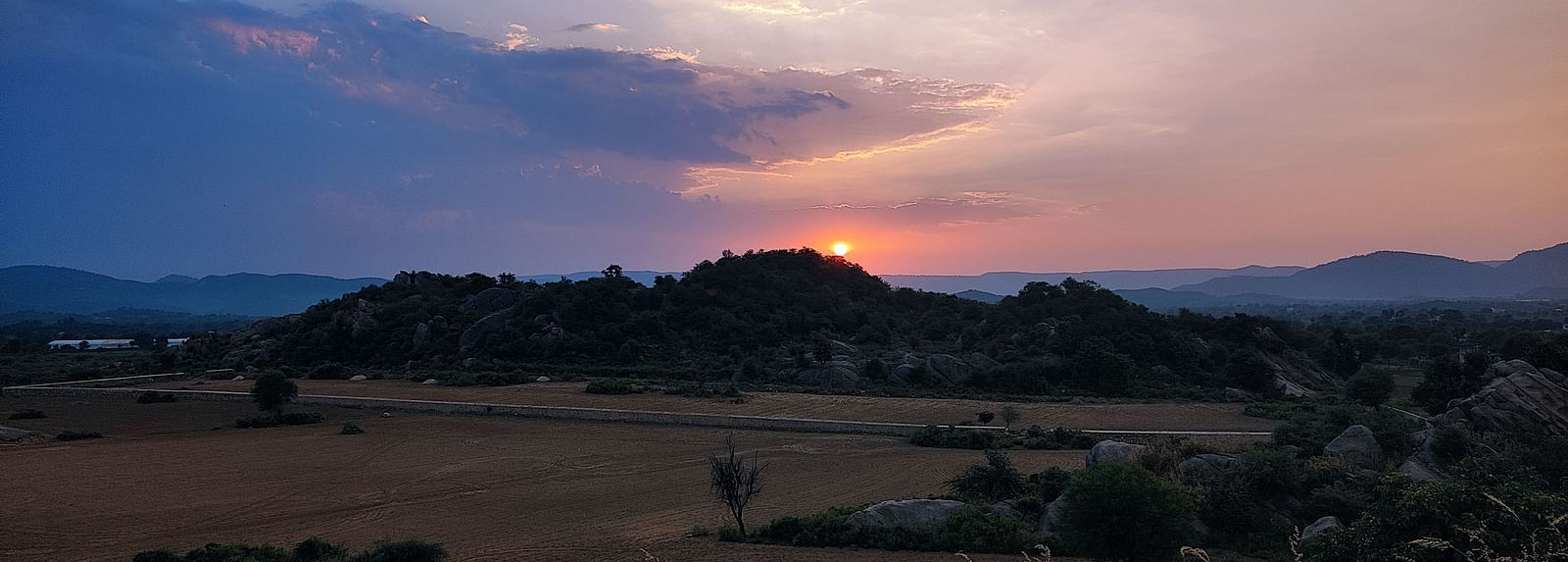
Boulders of Tehla
Tehla is located in the Alwar district of the state of Rajasthan. Tehla is surrounded by the Aravali Mountain range amongst which many small villages named Murlipura, Chawa ka baas, Ghewar, Talab, Losal, Nadoo, Nayala, Roopbas, Rajdoli, Mallana, Bhangarh, Naidoli, Dabkan are located.
The forests of Tehla consist of grasslands, dry deciduous forests, tropical forests, and scrub-thorny arid forests. Utsav Camp Sariska is located near to a village named Murlipura, which is just 1 km away from the Sariska Tiger Reserve. One geological wonder present near the Utsav Camp Sariska is the presence of ‘Boulders’.
Boulders are an amalgamation of igneous rocks that are spread out for about 12 to 15 km covering areas around the villages named Murlipura, Chawa ka baas, Ghewar, Talab, Losal, Nadoo, and Nayala. The boulders are an interesting geological wonder as they are estimated to be older than the Aravali Mountain ranges, which are the oldest mountain ranges in India.
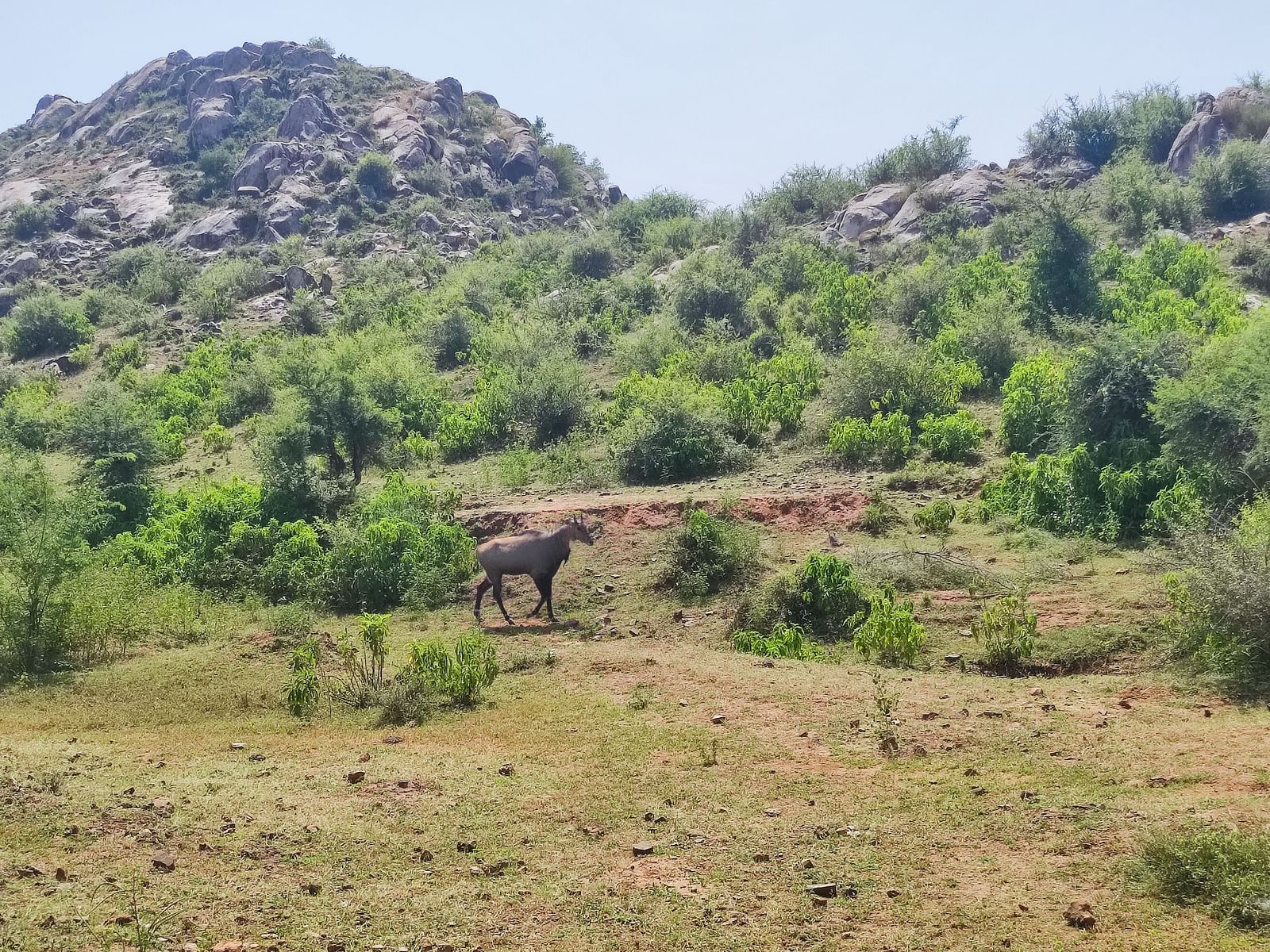
Flora and Fauna of the Boulders
The Boulders consist of many narrow passages, caves, crevices, and hill ranges extending for about 200 ft. The narrow passages and naturally formed depressions provide optimal water-storing spots for the animals and birds which inhabit the boulders. During monsoon and post-monsoon, these depressions are full of water and the passages have flowing water in the form of slow-flowing streams. The undulating terrain provides an intricate and secluded habitat for different animals and birds which take refuge amongst the boulders and also find ample food for survival.
Flora
The flora includes large deciduous trees to small shrubs which grow on and around the boulders. The flatlands present in between include the trees of Dhok (Anogeissus Pendula), Babool (Acacia Nilotica), Dhak/ Palas (Butea Monosperma), Ronj (Acacia Leucophloea), Ker (Capparis decidua), Ber (Ziziphus Mauritiana), Khair (Acacia Catechu), and Khajur (Phoenix Dactylifera). Amongst these trees are small thorny bushes and shrubs which grow amongst the boulders on the slopes, lowlands and also on the top.
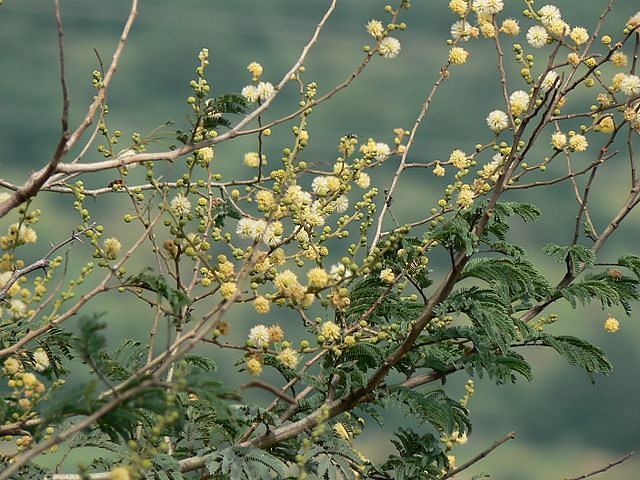
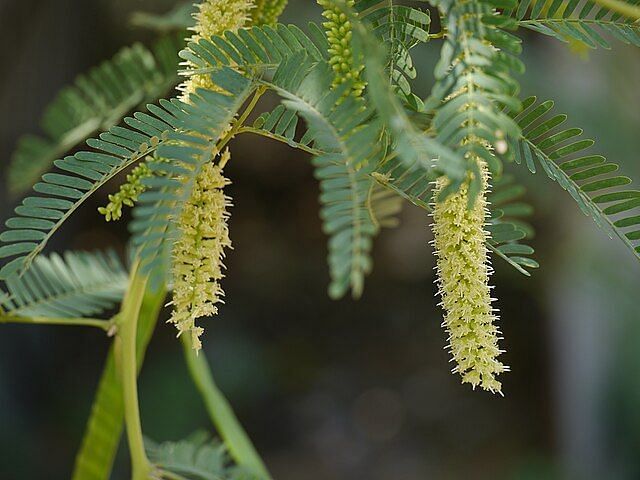
These include Gunja (Abrus Precatorius), Jal (Capparis Spiaria), Marod Phali (Helicteres Isora), Arandi (Ricinus Communis), Karanj (Prosopis Juliflora), Khaas (Vetiveria Zizanioides), Aswagandha (Withania Somnifera) and Jhahrberi (Ziziphus Nummularia). An invasive plant which has been well adapted to the boulders and found extensively is Adusa (Adhatoda Vasica).
Birds
The varied vegetation and ample of nesting and roosting places shelter a variety of small grass birds to huge predatory birds. As the season changes, different birds are observed whereas some resident birds are observed throughout the year. The monsoon and post-monsoon months (July to December) provide ample rainfall for the small catchment areas amongst the boulders to be filled up. The water gradually dries out at the end of winter (February) and the land becomes completely dried out when March starts.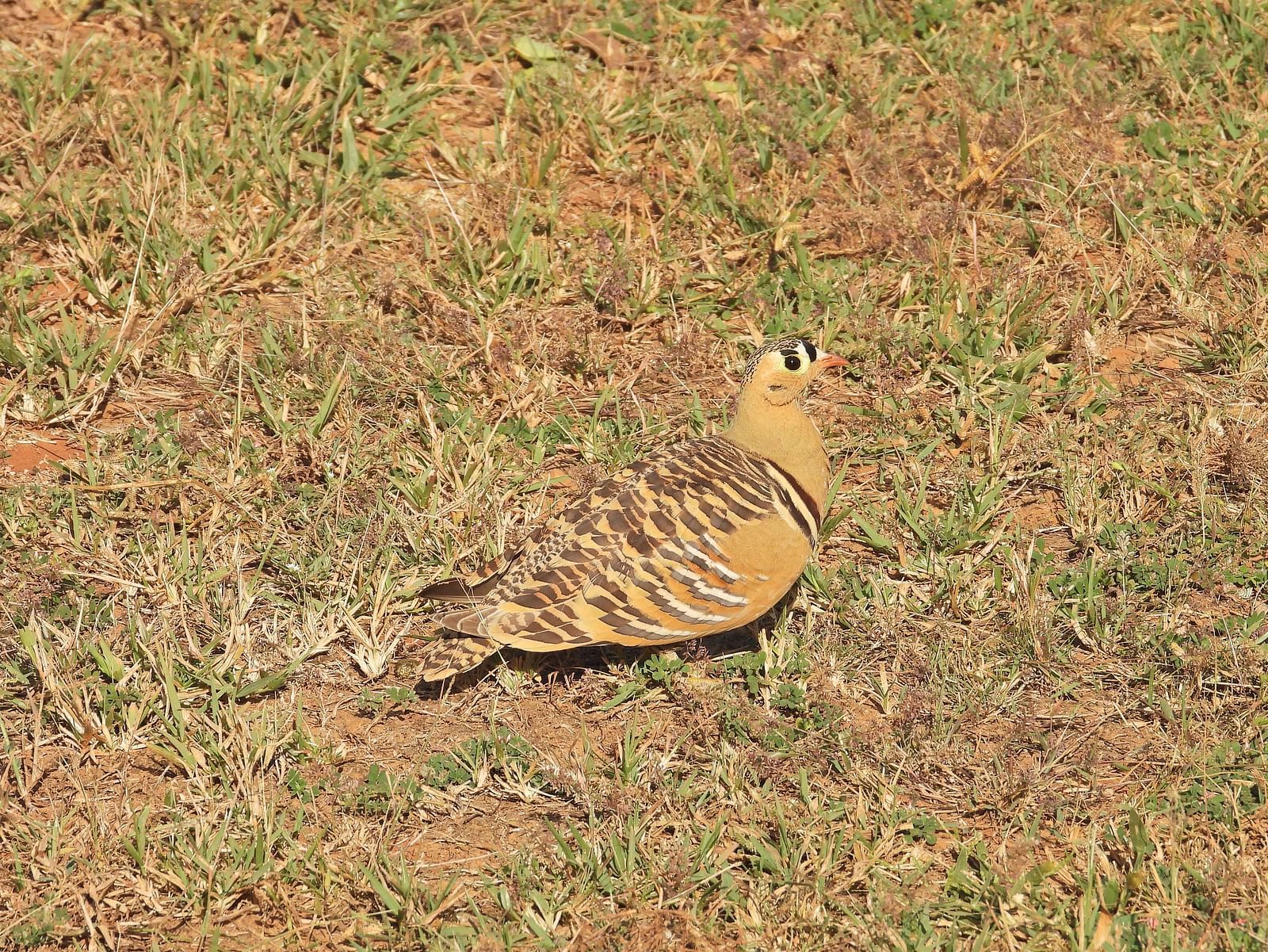
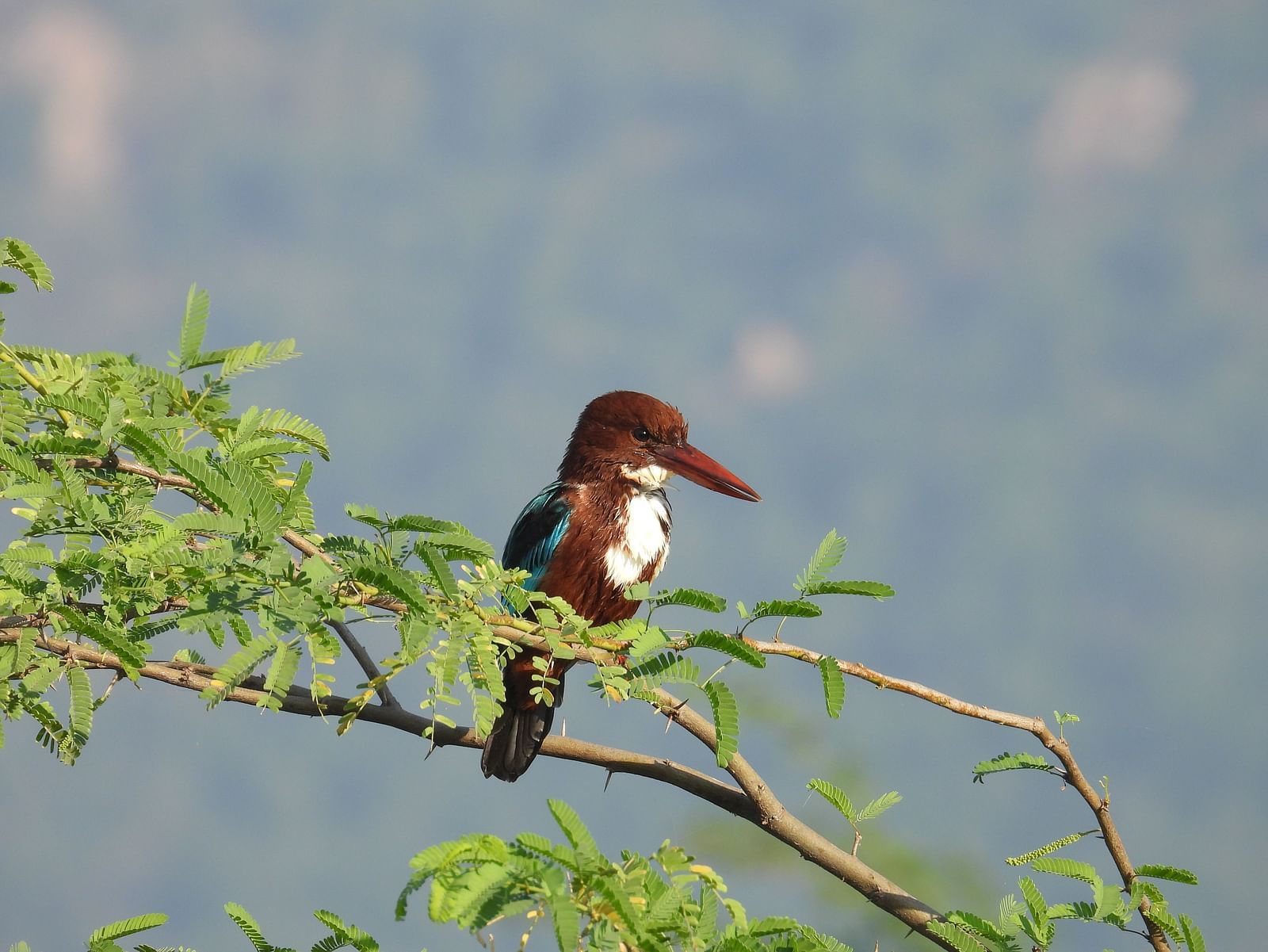
The birds seen throughout the year are Red Vented Bulbul, Indian Robin, Oriental Magpie Robin, Grey Francolin, Purple Sunbird, Rufous Treepie, Long-tailed Shrike, Rose-ringed and Plum-headed Parakeet, Brahminy, Pied Starling, Eurasian, Laughing Dove, Babbler, White-throated Kingfisher, Greater Flame Back Woodpecker, Black-winged Kite, Shikra, Prinia, Weaver, Indian and Egyptian Vulture, Indian Eagle Owl and many more. When water is available many water birds like Indian spot-billed duck, Black-winged Stilt, Pond Heron, Common Teal, Little Grebe, Great Thick-knee, Cattle Egret, White-breasted waterhen, and Bar Headed Goose are observed. The time of winter attracts many birds like Wheatear species, Bushchat species, Stonechat species, Lark species, Pipit species, Bunting species, Yellow Wattled Lapwing, many Warbler species and huge raptors like Common Kestrel, Bonelli’s Eagle, Oriental Honey Buzzard, and Pallid Harrier.
Mammals
The absence of human interference and plenty of protected terrains to roam about many mammal species are also observed amongst the boulders. The widespread boulder terrain has many crevices and caves due to erosion patterns. The caves are home to many mammal species which rest throughout the day and become active during the night time. The herbivore species which basically rely on the shrubs and leaves are Nilgai, Indian Porcupine and Black-naped Hare. The carnivore species which are actively spotted from dusk till dawn are the Indian Leopard, Indian striped Hyena, Golden Jackal, Indian Fox, Ruddy Mongoose, Grey Mongoose, Small Indian Civet, and Jungle Cat.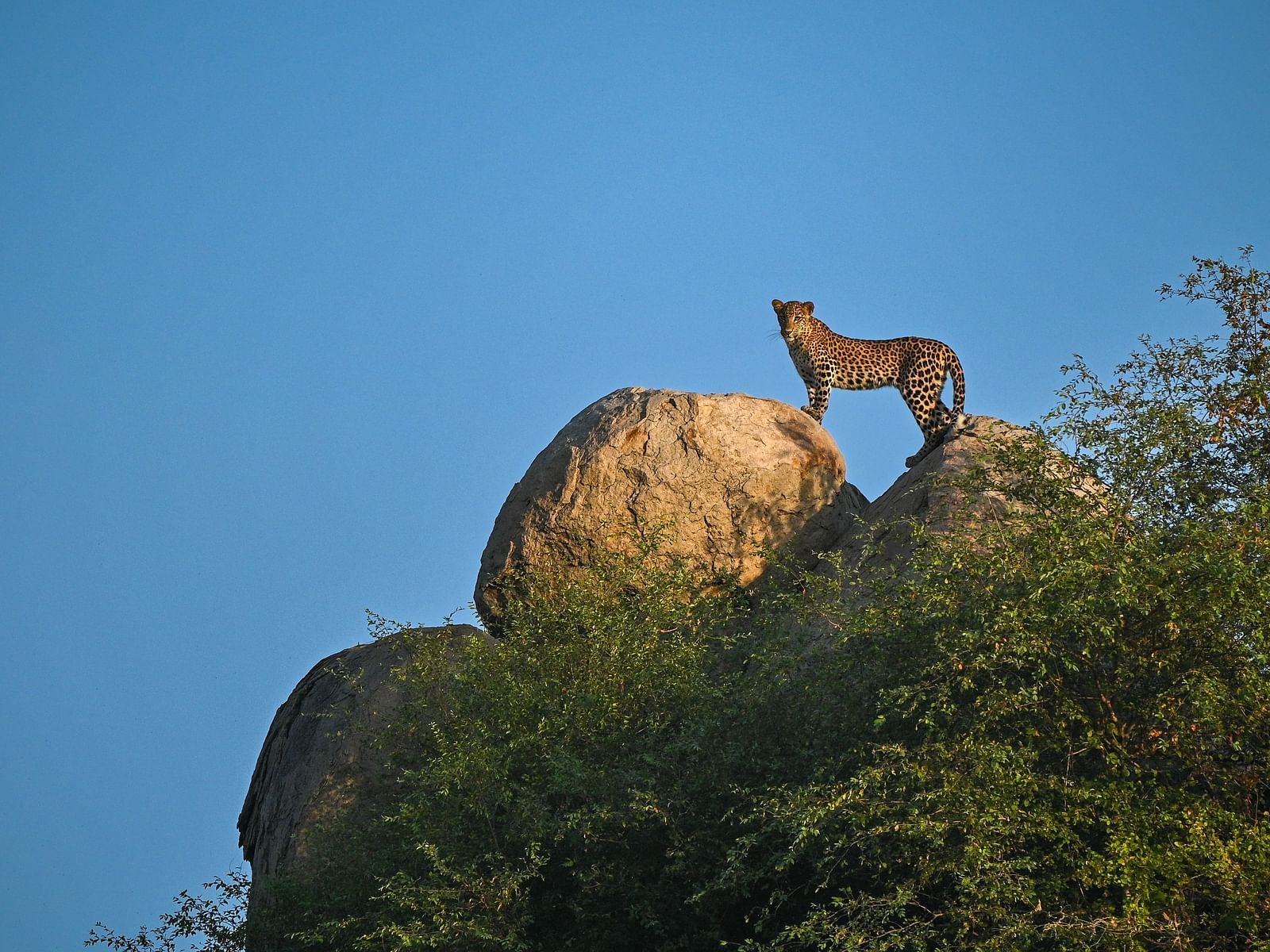
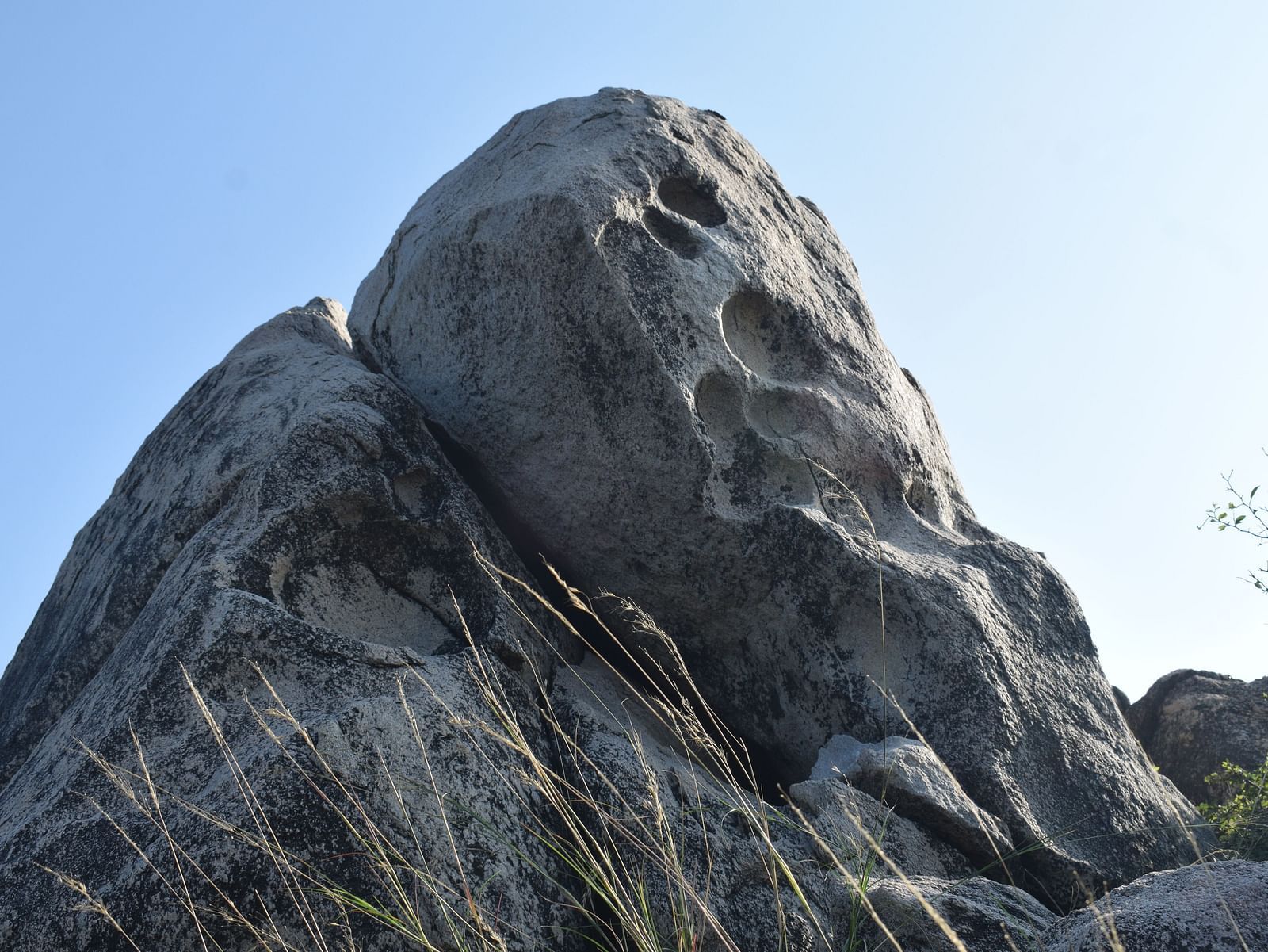
Cup Art of Boulders
The boulders are made of Igneous rocks and the major component of these rocks include granite and quartz. These rocks are erosion-resistant and radiometric dating suggests that the boulders are even older than the Aravalli hill ranges. These boulders showcase peculiar cup-shaped (hemispherical) marks on the boulder surface which have been pounded into the rock surface by humans. These cup-shaped marks are one of the most common types of rock art and are termed 'cupules’.
These cupules are seen on many surfaces (horizontal and vertical) and are supposedly made by percussion blows by humans. The surface around the cupules shows microscopic signs of crushed rock particles and surface bruising. Cupules are the earliest known prehistoric art, and have been found in every continent except Antarctica, and were produced during all three eras of the Stone Age (Palaeolithic, Mesolithic and Neolithic). Cup art is abundant in various parts of Rajasthan, mainly in the Alwar, Kota and Bundi areas. In India, for example, home of the Bhimbetka Petroglyphs, the world's earliest art cupules were also made during the era of Mesolithic (10,000-6,000 BCE) and Neolithic art (6,000-2,000 BCE onwards) as well as the preceding Upper Palaeolithic.
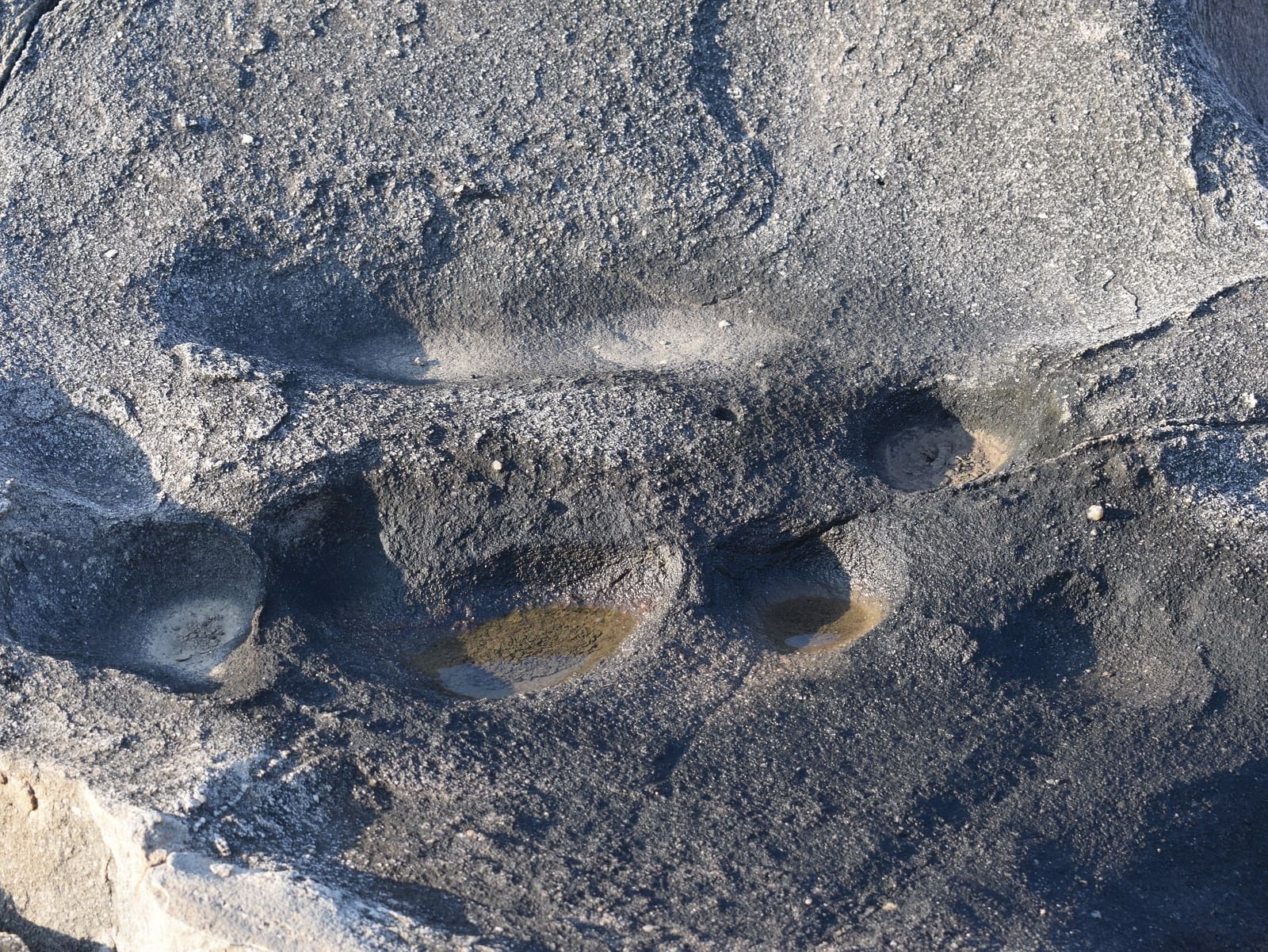
Other Blogs
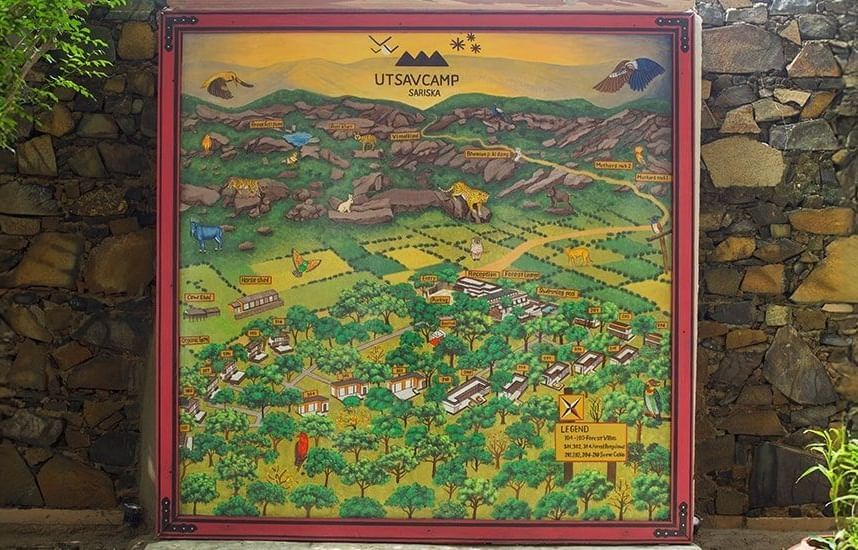
Behind the Scenes of a Hand-painted Map
Behind the scenes of Utsav Camp Sariska’s hand-painted Naturalist Map—7 days of artistry capturing the wild spirit of Sariska Tiger Reserve.
Read More
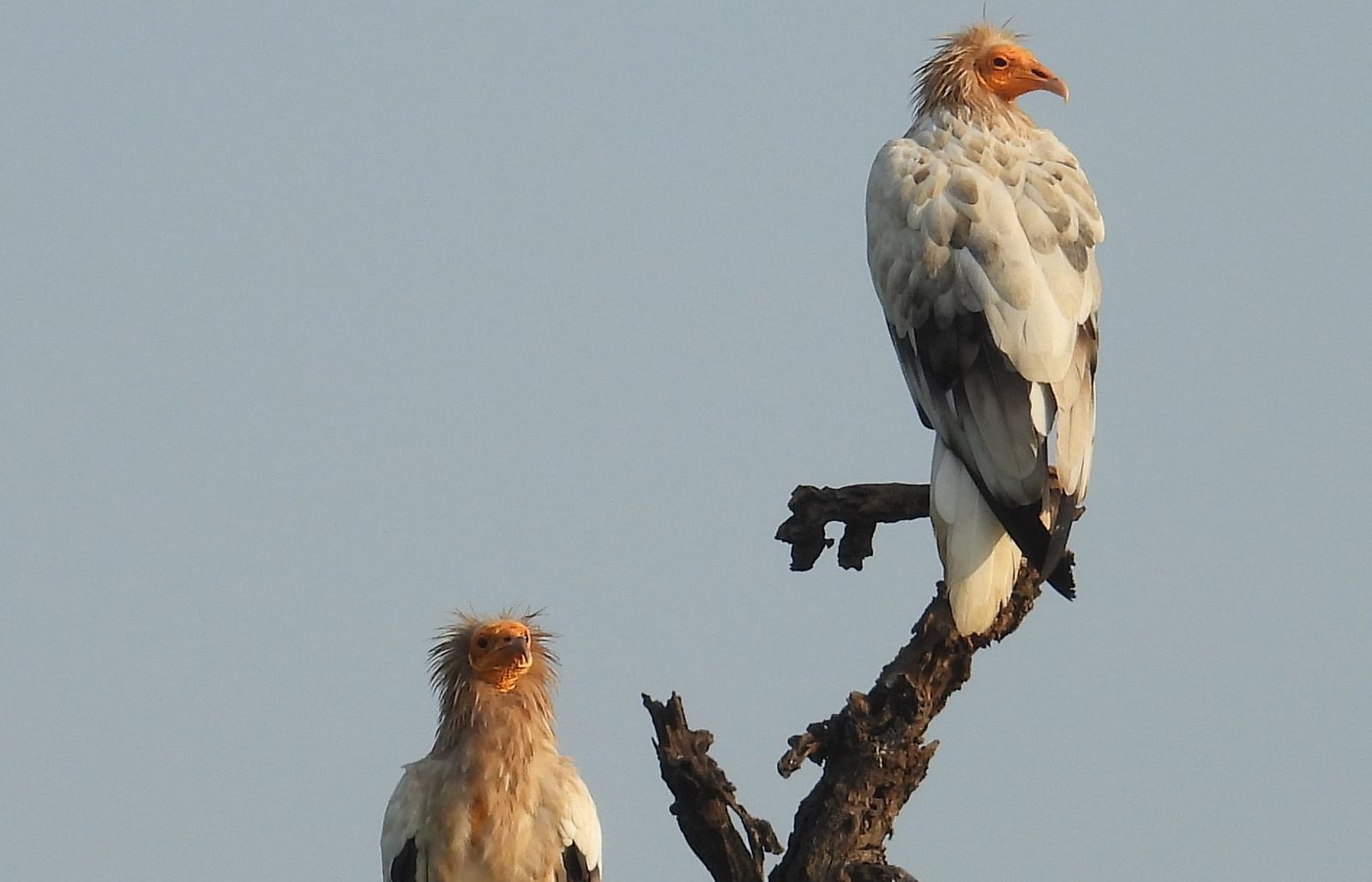
Vultures of Sariska
Discover the diverse vulture species inhabiting Sariska, their ecological roles, and the environmental effects they bring.
Read More
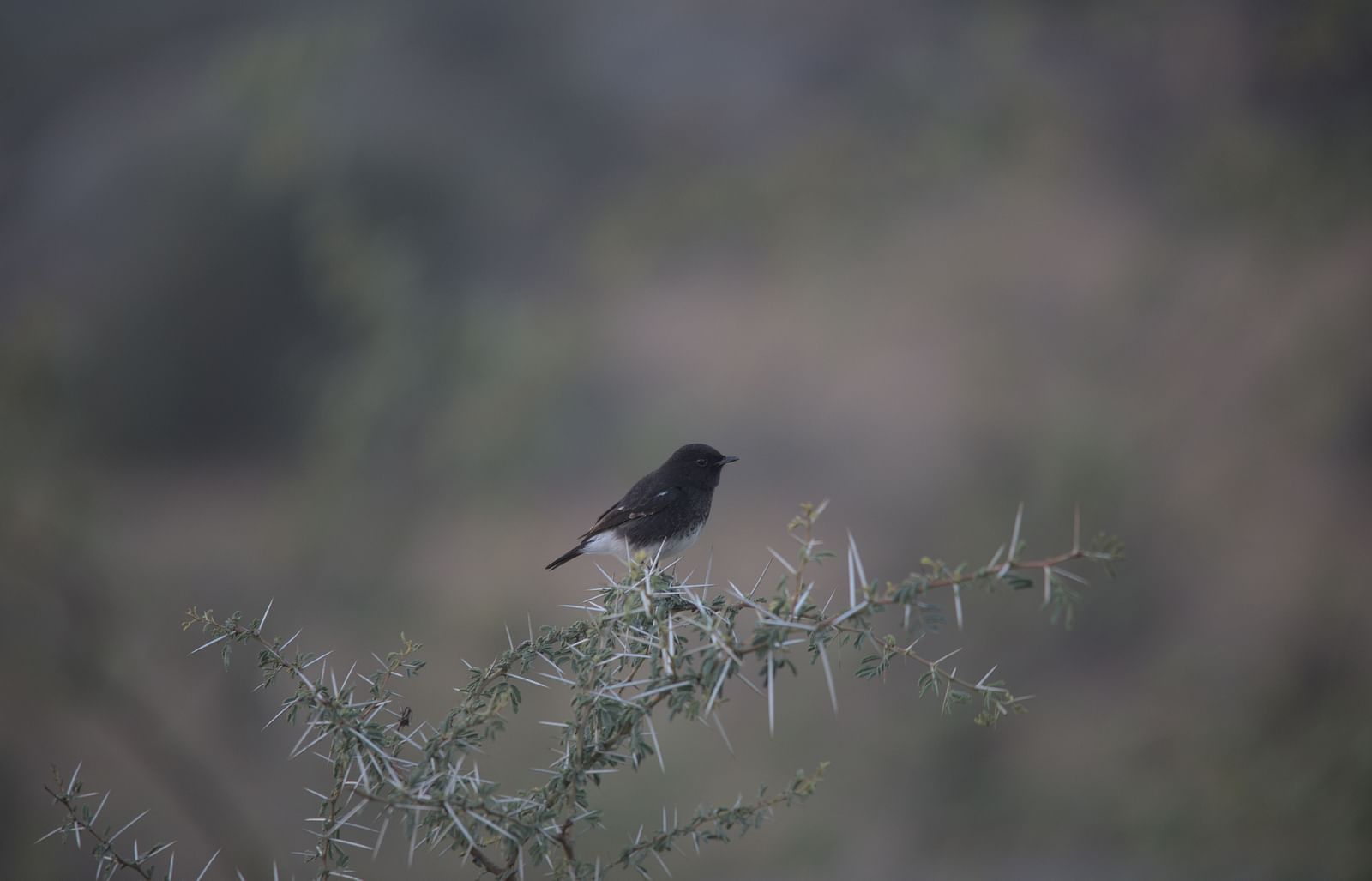
Deciduous Jungle of Sariska
The deciduous jungle of Sariska is home to a variety of trees and plants, each with significant medicinal and commercial value. Discover more about these remarkable species in this detailed guide.
Read More
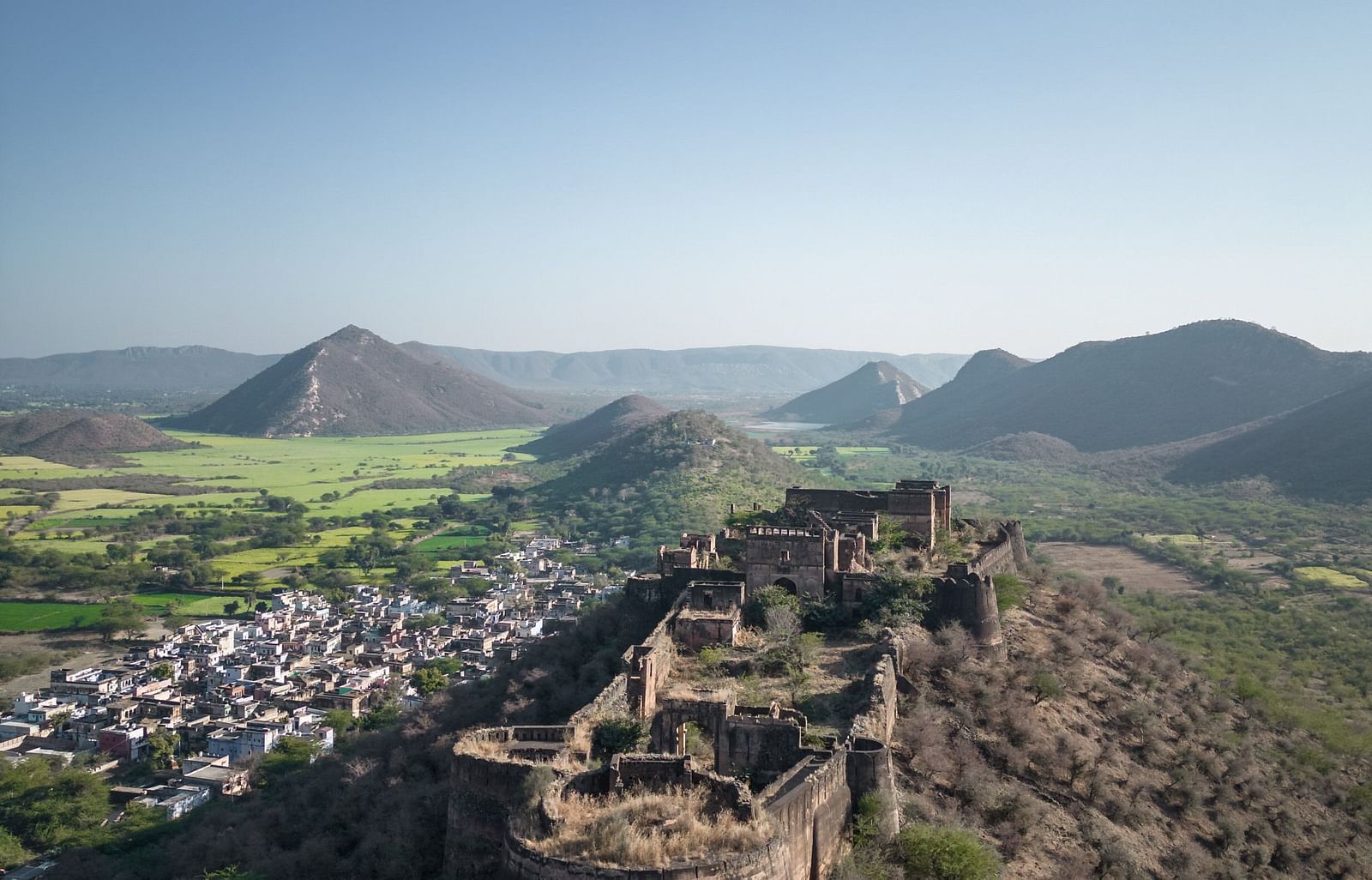
Mythological Importance of Sariska
Learn about the mythological significance of Sariska, including its temples, forts, and more, in this insightful blog.
Read More
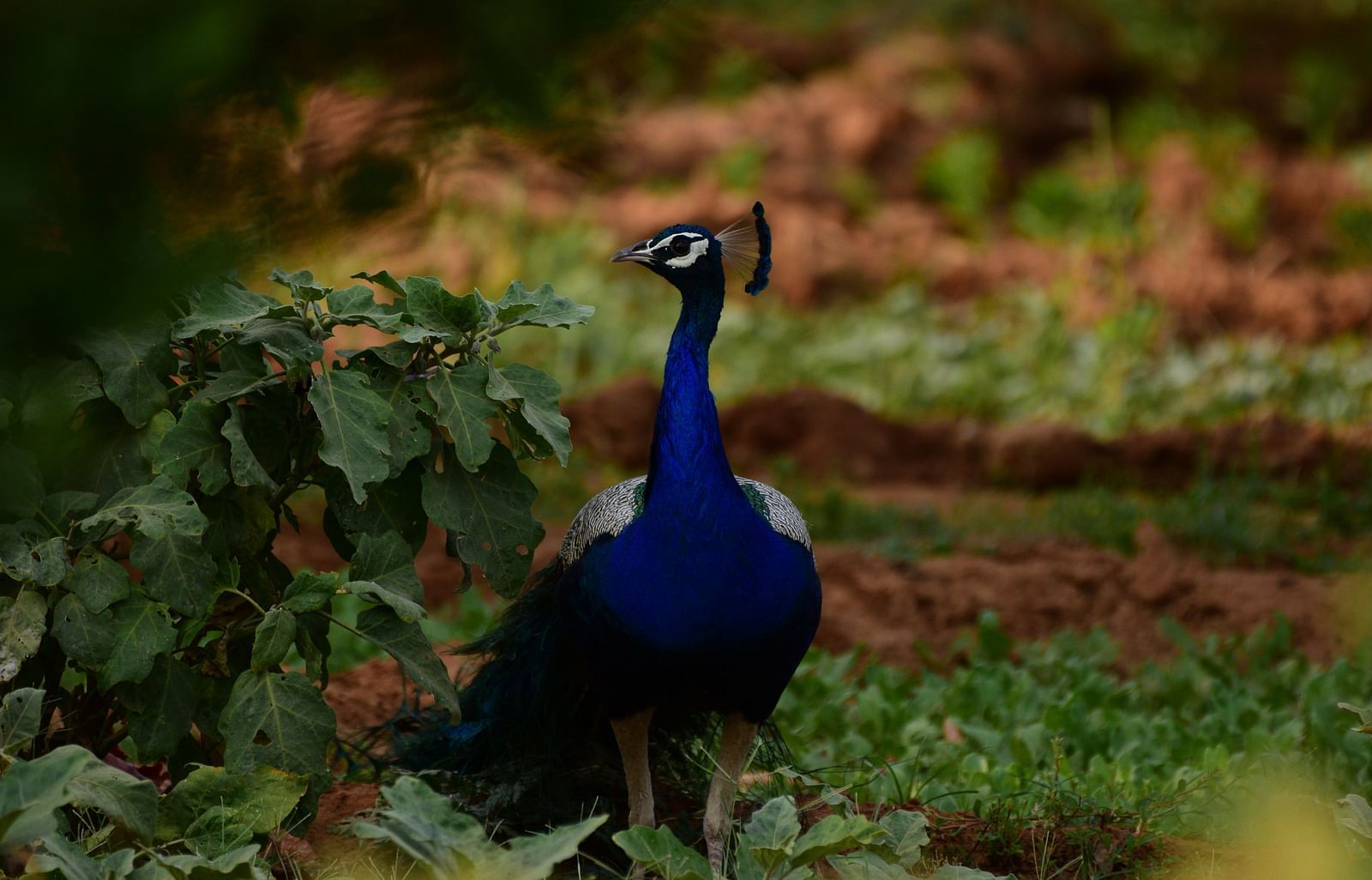
Sariska Tiger Reserve
Uncover Sariska Tiger Reserve in Alwar, Rajasthan! Delve into its history, park timings, and more in this detailed blog.
Read More
)
Avifauna of Utsav Camp Sariska, Around the Camp, and Nearby Wetlands
Explore the Avifauna of Utsav Camp Sariska, with diverse bird species around the camp and nearby wetlands, offering a birdwatcher's paradise and serene natural beauty.
Read More
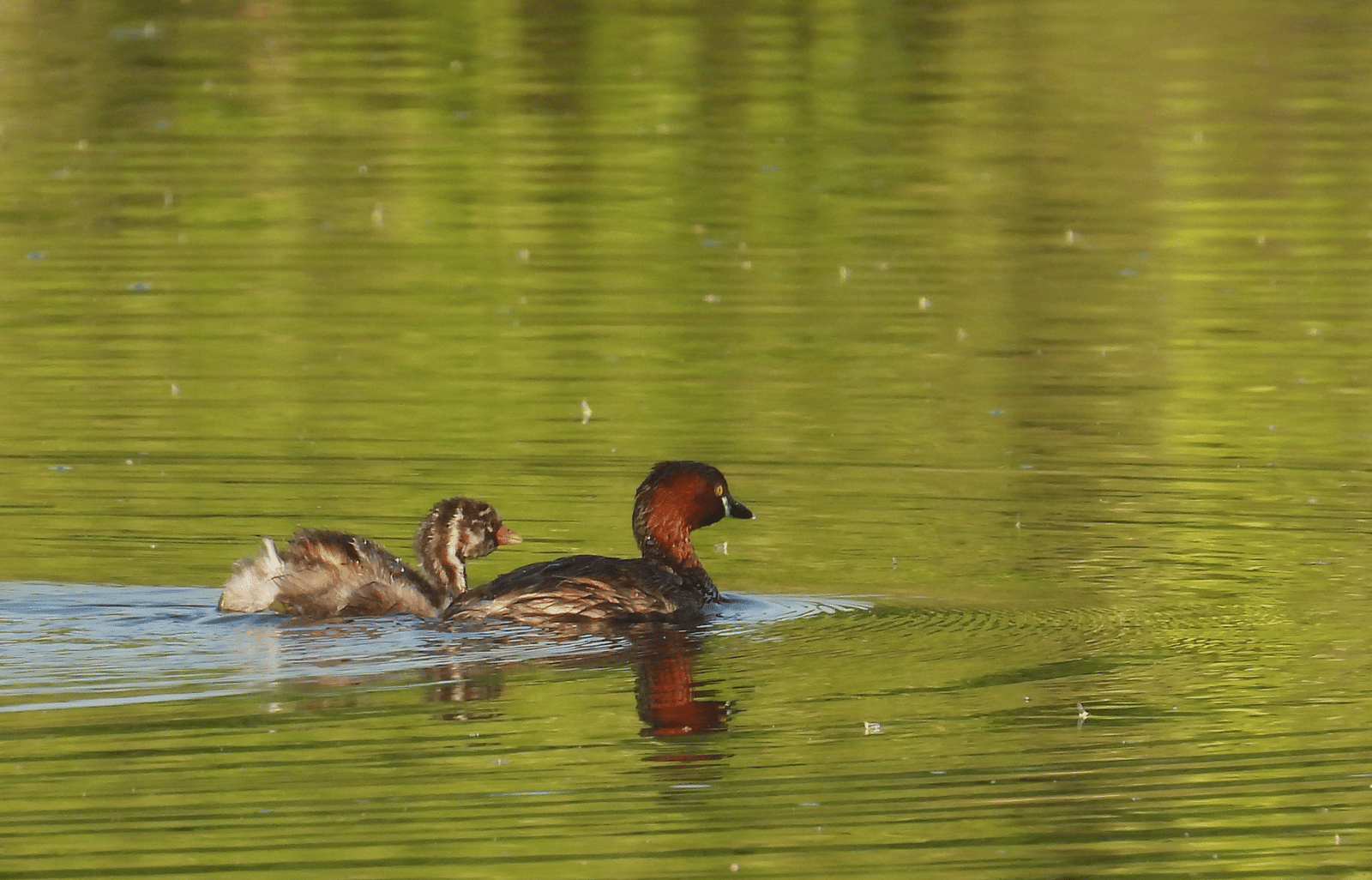
Migratory Birds of Sariska
Delve into the migratory birds of Sariska and discover their seasonal migration patterns in this insightful blog.
Read More
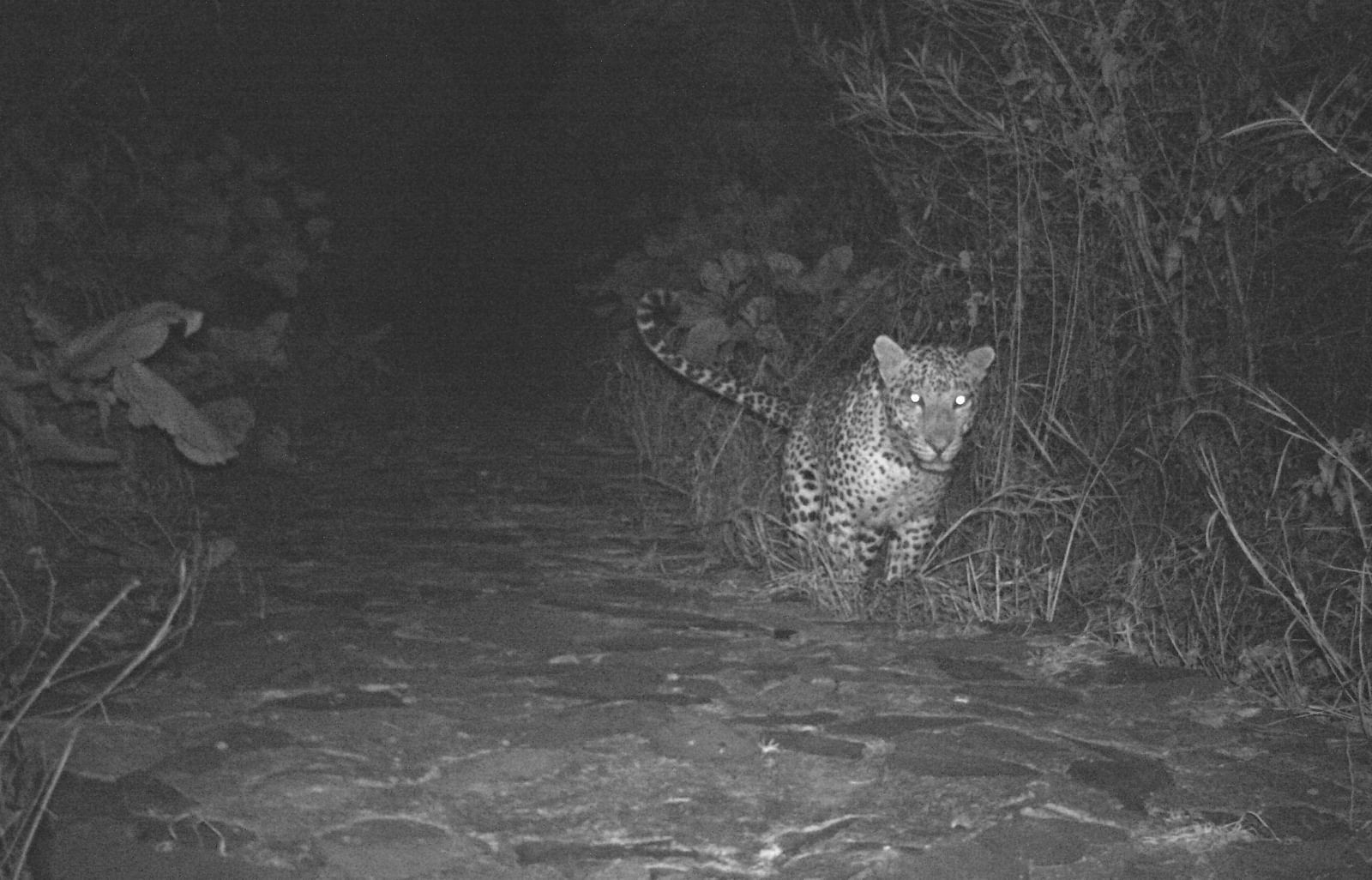
Camera Trap
Camera traps are used to record notable animal behaviour changes over a decade. Learn how we use them at Utsav Camp Sariska to monitor the wildlife surrounding us.
Read More

Hide and Seek with Hyena
Away from the labs of The Maharaja Sayajirao University of Baroda, into the wilderness of boulders, this was the first time I came out of my comfort zone and got an opportunity to work at Utsav Camp Sariska as an intern.
Read More
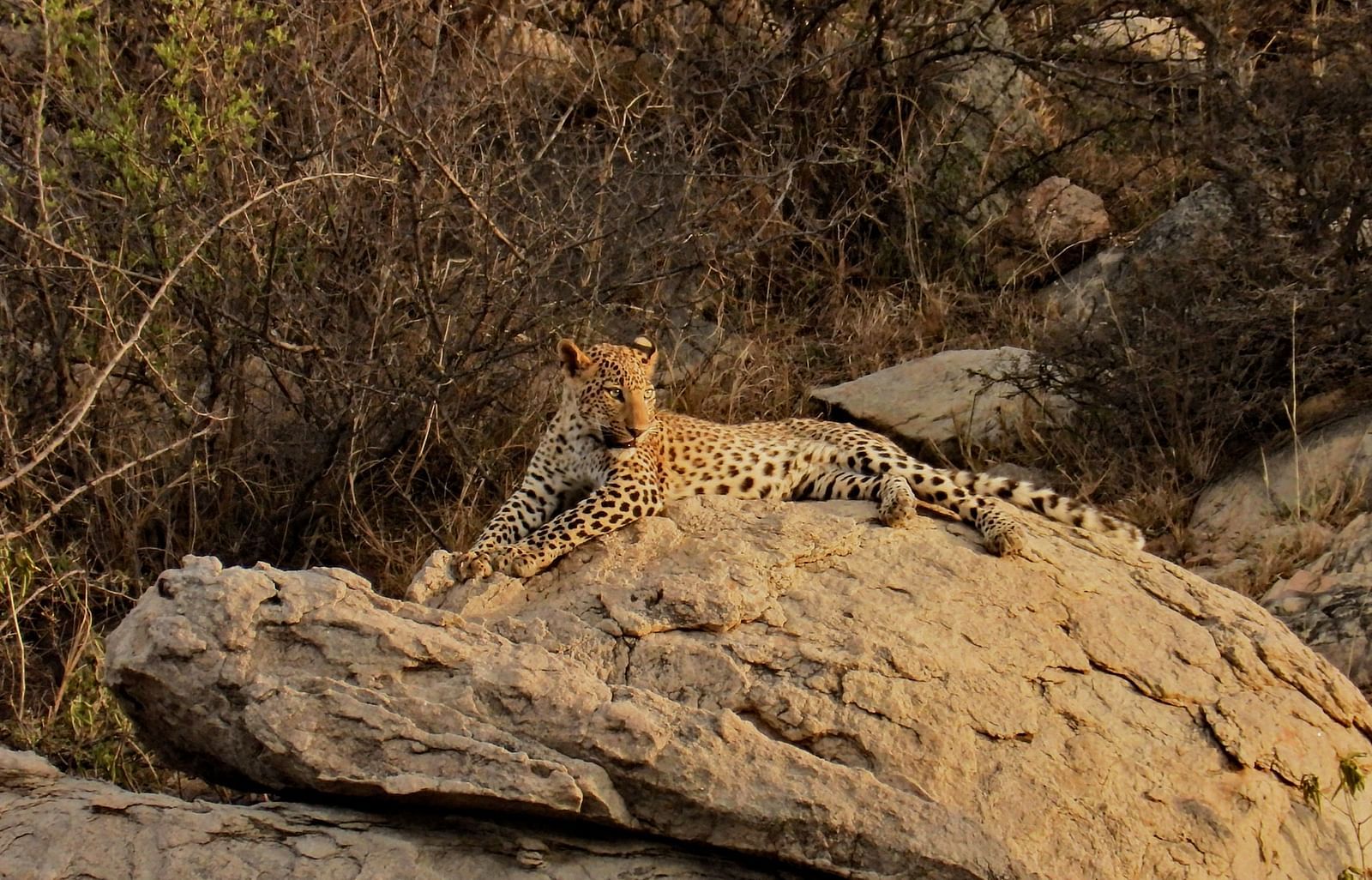
In the Wild Heart of Sariska: A Journey into the Unknown
An intern’s first encounter with the wild at Sariska—from leopard sightings to silent sunsets, a journey into nature, guided by expert naturalists and deep curiosity.
Read More
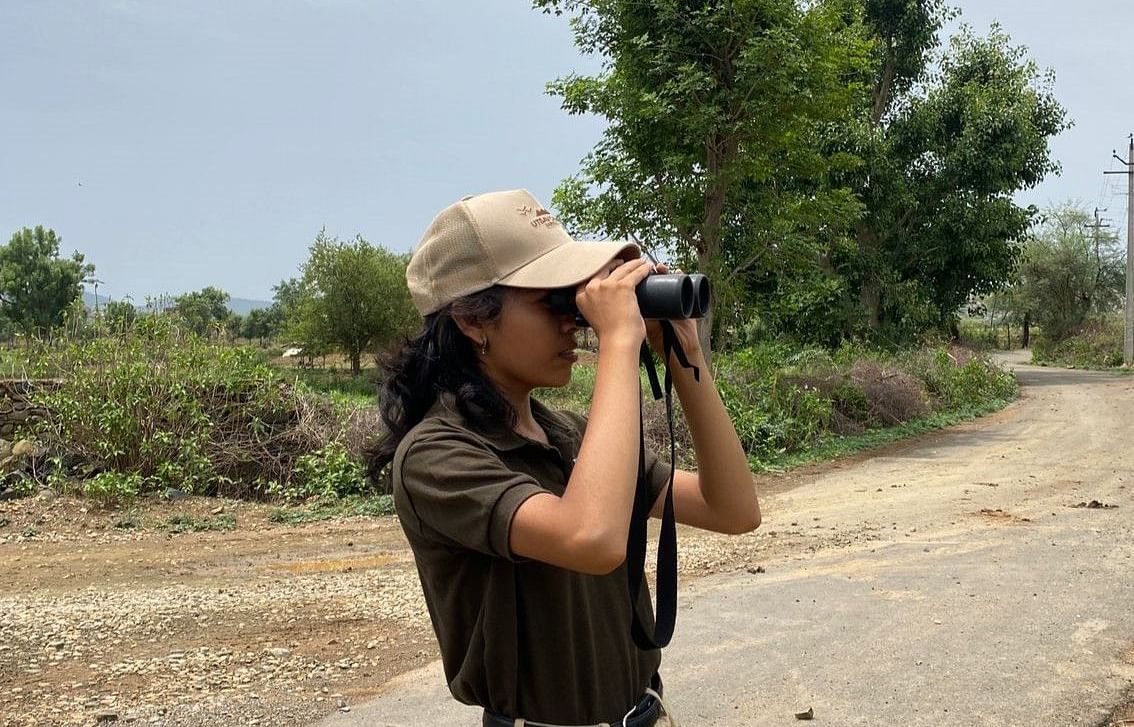
The Glowing Eyes
A thrilling morning in Sariska as glowing eyes in the dark lead to an unforgettable leopard encounter and wild insights.
Read More